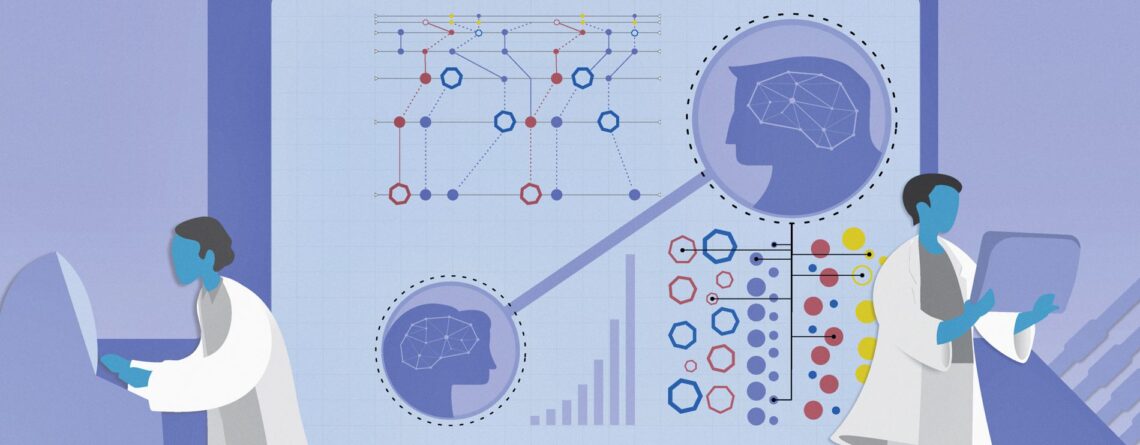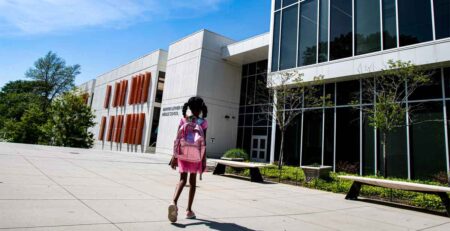What Happens to the Brain as We Age?
Your brain changes more than any other organ throughout your life. From gestation through your golden years, its complex structures and connectivity are constantly evolving, with neural pathways and networks being formed and reformed over time.
Scientists are still piecing together the intricacies of normal brain development and aging, how it might be altered by environmental or genetic factors, and which interventions may help reduce the deterioration of — or improve the capabilities of — cognitive function. To learn more, Georgia State researchers have established the multidisciplinary Center for Dynamic Multiscale and Multimodal Brain Mapping Over the Lifespan (D-MAP), which is focused on brain development, structure and connectivity from childhood onward. The work is fueled by a prestigious $5 million grant from the National Science Foundation’s Centers of Research Excellence in Science and Technology (CREST) program, which supports the research capabilities of minority-serving institutions through the establishment of centers that effectively integrate education and research.
“Mapping the human brain is critical to improving our knowledge of brain development, diseases and therapeutic strategies,” says Vince Calhoun, the project’s principal investigator and the director of the Center for Translational Research in Neuroimaging and Data Science (TReNDS). “This effort will push us towards new ways of improving and preserving brain health and function throughout the course of our lives.”

D-MAP, which includes faculty spanning 10 departments and four schools and colleges at Georgia State, is embarking on three research projects to study links between the brain’s development in different stages of life. In the first project, researchers are developing new methods to gain insight into the brain’s structure and functional connectivity patterns — and how they are transformed during learning and across the lifespan. The researchers will then apply these methods to study what areas of the brain are critically engaged in reading. They will also study how transcranial magnetic stimulation (TMS), a noninvasive procedure that uses magnetic fields to stimulate the brain, can modulate the brain’s reading network.
“This knowledge could one day help people, especially those with learning disabilities, learn to read better,” says Robin Morris, Regents’ Professor of Psychology and a co-principal investigator on the grant. “TMS has been used to successfully treat severe depression, but we’re looking at whether it can also be effective at improving learning outcomes.”
The second project is focused on developing novel techniques to fuse different kinds of imaging data, such as information about the brain’s structure and its connectivity, and how various markers change as we age. The researchers will use advanced methods including deep learning to analyze this data and identify brain patterns related to cognition and mood.
In the third project, the team will analyze large existing neuroimaging datasets — which include participants ranging from kindergarteners to people in their 80s — to develop “predictive fingerprints” of the developing and aging brain. They will then use their findings to predict aspects of linguistic processing, such as working memory or processing speed, using imaging data.
Importantly, D-MAP will provide hands-on research experiences for students, particularly those who are historically underrepresented in science, technology, engineering, and mathematics (STEM) disciplines. This summer, TReNDS will host its first CREST D-MAP undergraduate research program, during which students will work on grant-funded research in a lab. Students will be able to engage in neuroimaging research across the university, attend professional development workshops and present their projects at the end of the summer. They are also recruiting the center’s first graduate student D-MAP cohort. This 12-student cohort will have access to weekly research and professional development talks and will contribute to the team’s research projects.
“Welcoming historically underrepresented groups into the research endeavor is part of the mission of CREST, and it also aligns with the university’s goal to provide high quality education for people of all backgrounds and to promote their progress into advanced degrees and careers,” says Kyle Frantz, professor of neuroscience and director of the Center for the Advancement of Students and Alumni, who is leading the center’s education initiatives.
The center is even engaging K-12 students through short courses and research internships. The team recently participated in two Atlanta Science Festival events, including a virtual learning event about magnetic resonance imaging (MRI). They’ve also planned outreach events for neurodiverse students and will put together learning programs in partnership with local Atlanta schools.
“CREST will expand our ability to recruit and train undergraduate students as fully-functioning members of research teams,” says Calhoun, a Distinguished University Professor of Neuroscience and Psychology. “They’ll be gaining the skills they need to join the STEM workforce and helping contribute to the generation of new knowledge and discoveries.”
Illustration by Reid Schulz (B.F.A. ’18)












Leave a Reply